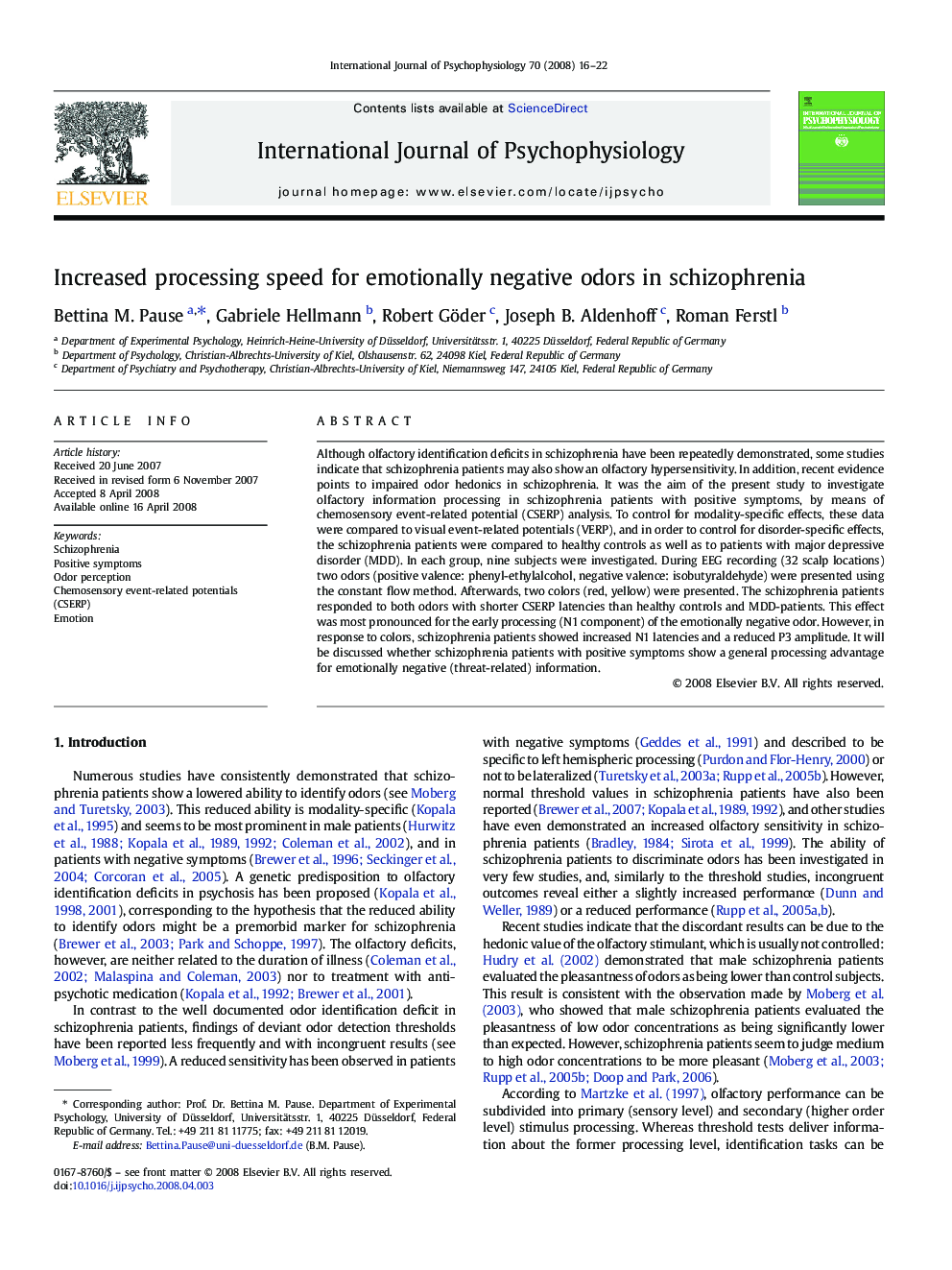| Article ID | Journal | Published Year | Pages | File Type |
|---|---|---|---|---|
| 931491 | International Journal of Psychophysiology | 2008 | 7 Pages |
Although olfactory identification deficits in schizophrenia have been repeatedly demonstrated, some studies indicate that schizophrenia patients may also show an olfactory hypersensitivity. In addition, recent evidence points to impaired odor hedonics in schizophrenia. It was the aim of the present study to investigate olfactory information processing in schizophrenia patients with positive symptoms, by means of chemosensory event-related potential (CSERP) analysis. To control for modality-specific effects, these data were compared to visual event-related potentials (VERP), and in order to control for disorder-specific effects, the schizophrenia patients were compared to healthy controls as well as to patients with major depressive disorder (MDD). In each group, nine subjects were investigated. During EEG recording (32 scalp locations) two odors (positive valence: phenyl-ethylalcohol, negative valence: isobutyraldehyde) were presented using the constant flow method. Afterwards, two colors (red, yellow) were presented. The schizophrenia patients responded to both odors with shorter CSERP latencies than healthy controls and MDD-patients. This effect was most pronounced for the early processing (N1 component) of the emotionally negative odor. However, in response to colors, schizophrenia patients showed increased N1 latencies and a reduced P3 amplitude. It will be discussed whether schizophrenia patients with positive symptoms show a general processing advantage for emotionally negative (threat-related) information.
